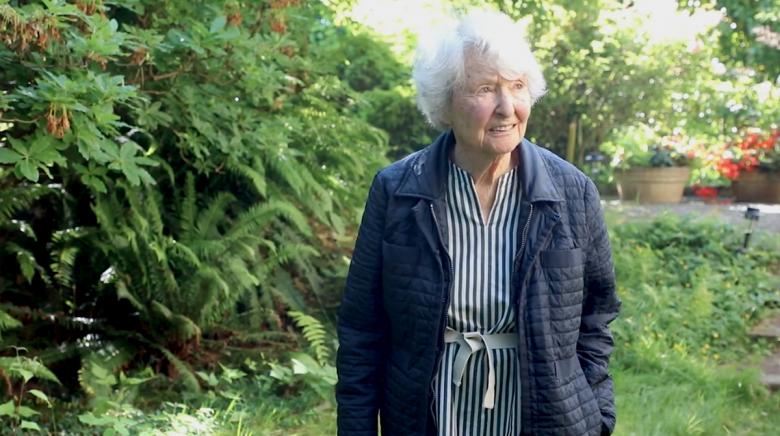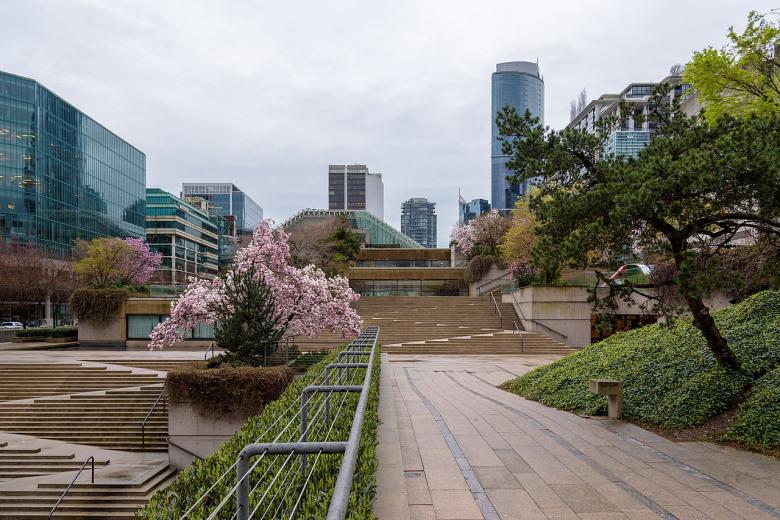Cornelia Hahn Oberlander (1921–2021)
Canadian landscape architect Cornelia Hahn Oberlander died on Saturday, May 22, in Vancouver, about a month shy of her 100th birthday. She is the namesake for the Cornelia Hahn Oberlander International Landscape Architecture Prize that will be conferred for the first time later this year.
Oberlander's death on Saturday also came just a few days after the Vancouver city council voted, as reported by the CBC, to grant her the Freedom of the City Award. The honor, first granted in 1936, is given to "individuals who have gained national or international acclaim in their field and brought recognition to Vancouver through their work," per the city. It is a fitting honor for a landscape architect who has made a substantial mark on Vancouver but also impacted landscape architecture well beyond British Columbia. She is considered a pioneer for her designs and her role in the profession, often called the "Dean of Canadian Landscape Architecture."
Born in Muelheim-Ruhr, Germany, Oberlander immigrated to the United States with her mother and sister at the age of 18 (her father had died when she was a child), ending up first in New York then New Hampshire. Oberlander attended Smith College and then the Harvard Graduate School of Design, becoming one of the first women to attend and graduate from the GSD, which she did in 1947. She moved to Philadelphia and worked for landscape architects James C. Rose and Dan Kiley, and with architects Louis I. Kahn and Oskar Stonorov, but then left in 1953 for Vancouver with her husband, H. Peter Oberlander, himself an architect and planner, at which time she opened her own practice.
Once in Canada she worked on projects in British Columbia but continued to collaborate on projects in the United States, including a playground in Philadelphia. Throughout her career she worked on dozens of playgrounds across Canada, most notably the Children's Creative Center Playground at Expo '67, part of the Canadian Federal Pavilion.
The following decade saw her most famous work: Robson Square (1979), a large civic complex in Downtown Vancouver, designed by Arthur Erickson. Effectively a three-block-long roof garden, Oberlander's most indelible mark are the "stramps" that accessibly connect the street and lower levels to the raised landscapes. She continued collaborating with Erickson on projects in and beyond British Columbia, including the Museum of Anthropology at UBC (1976) and the Canadian Embassy (1989) in Washington, DC.
Later works of note include the roof garden and plazas for the Vancouver Public Library (1995, with Moshe Safdie, also a frequent collaborator), the landscape master plan for her alma mater, Smith College, and the courtyard and roof garden for the New York Times Building (2008), with HM White.
Much of the above information on Oberlander's life comes from the website of the Cultural Landscape Foundation (TCLF), which interviewed Oberlander in 2008 as part of its Oral History project and later set up Cornelia Hahn Oberlander International Landscape Architecture Prize. The inaugural $100,000 Oberlander Prize will be given later this year and on a biennial basis after that. In naming the prize after Oberlander, TCLF President and CEO Charles Birnbaum said that "Oberlander’s inspiring and trailblazing career in the field of landscape architecture exemplifies the critical values and ideals of the Prize."
Oberlander was laid to rest on Monday at Temple Sholom Cemetery in White Rock, British Colombia, in a landscape she helped shape:
Related articles
-
-
-
Allied Music Centre/Massey Hall Renovation and Expansion
KPMB Architects | 01.12.2025 -

